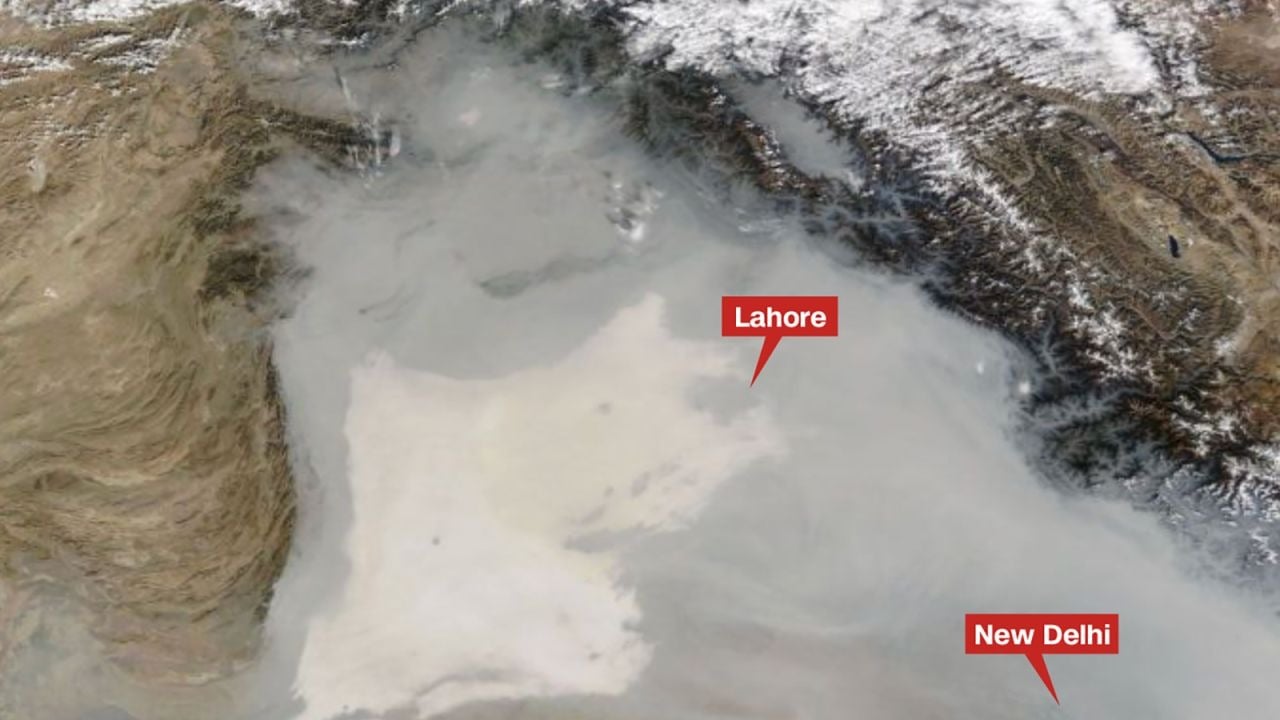
Toxic smog in Pakistan has reached alarming levels, with pollution so severe that it’s visible from space.
On Monday, National Aeronautics and Space Administration (NASA) shared the satellite imagery from NASA Worldview that showed a huge cloud of grey smog covering Pakistan’s Punjab province and east India, over the capital New Delhi and beyond.
Due to the high air quality index (AQI), the authorities took strict measures by closing the schools and public spaces.
In a shared image, the Pakistani cities of Lahore and Multan were covered in a dark haze as due to the pollutant smog the visibility was very low on the streets of affected areas.

Every winter, when a menacing yellow haze covers the skies due to a mixture of coal-fired power plants, traffic, windless days, and farmers burning agricultural waste, pollution in the area increases.
As per IQAir, Punjab’s AQI, has exceeded 1,000 multiple times in the past week as reading above 300 is considered dangerous to the health.
On Monday, in the city of Multan in Punjab, the reading for the tiniest and most dangerous pollutant, PM2.5, was more than 110 times higher than safe levels set by the World Health Organization.
Pakistan’s Environmental Protection Agency said Sunday there was “an unprecedented rise in the number of patients with lung and respiratory diseases, allergies, eye and throat irritation” in the districts of Faisalabad, Multan and Gujranwala, where the air quality is “alarmingly hazardous.”















